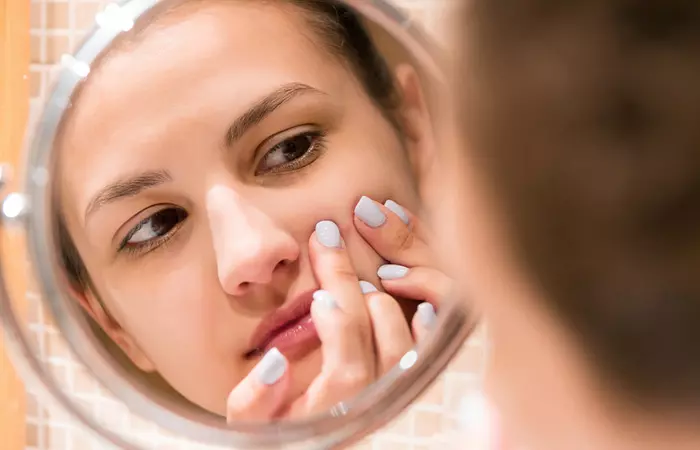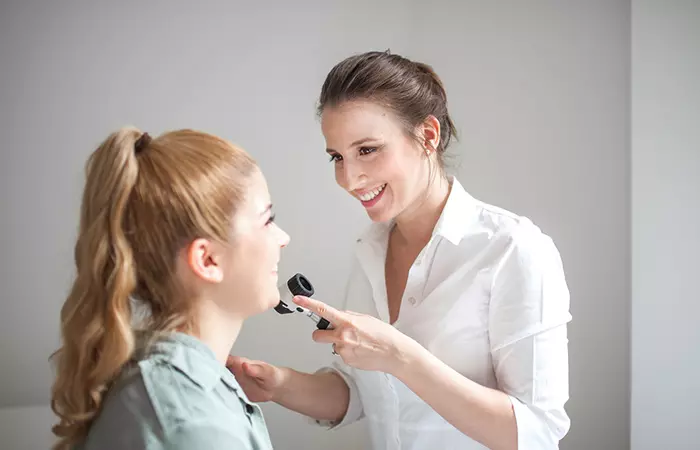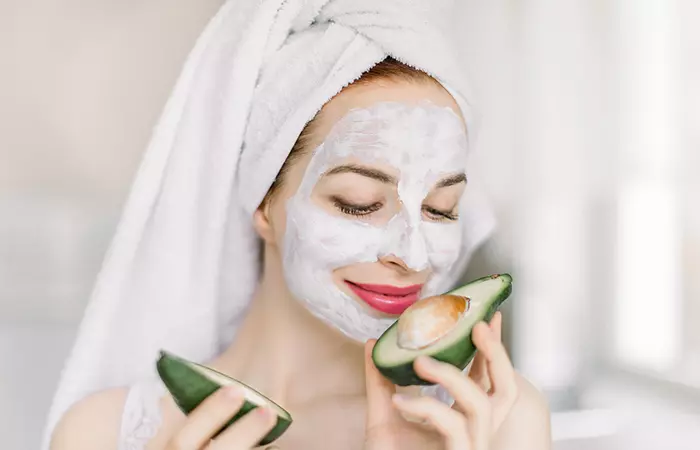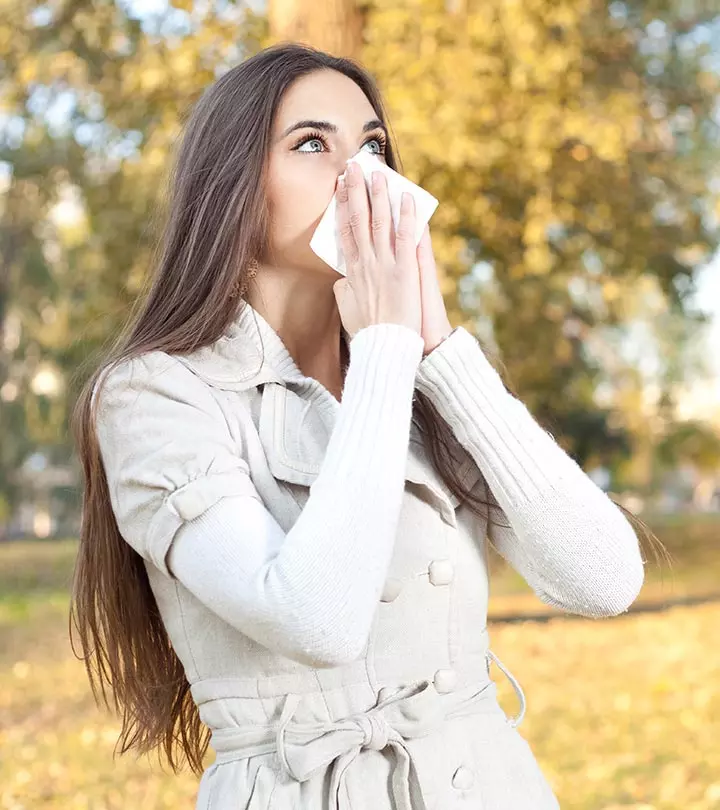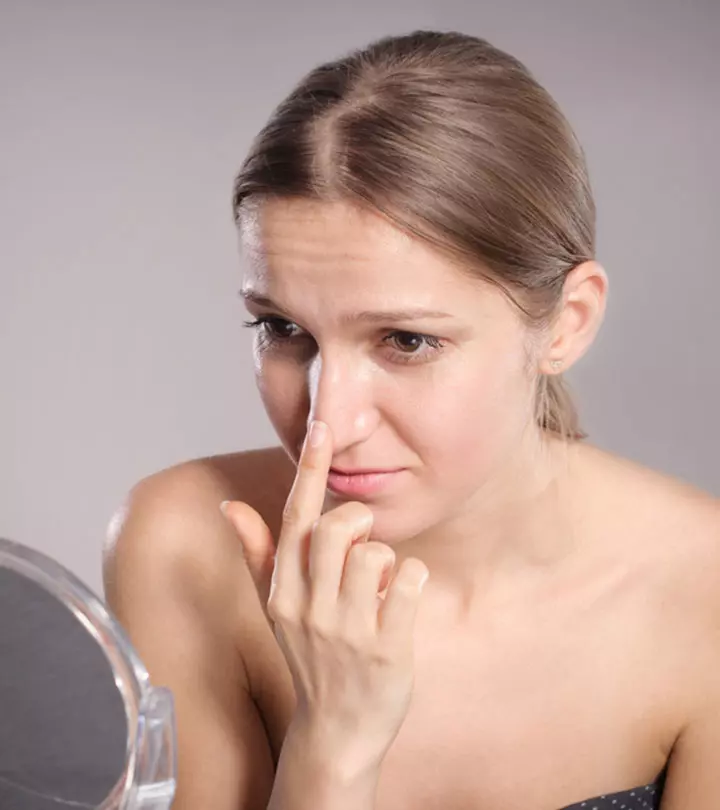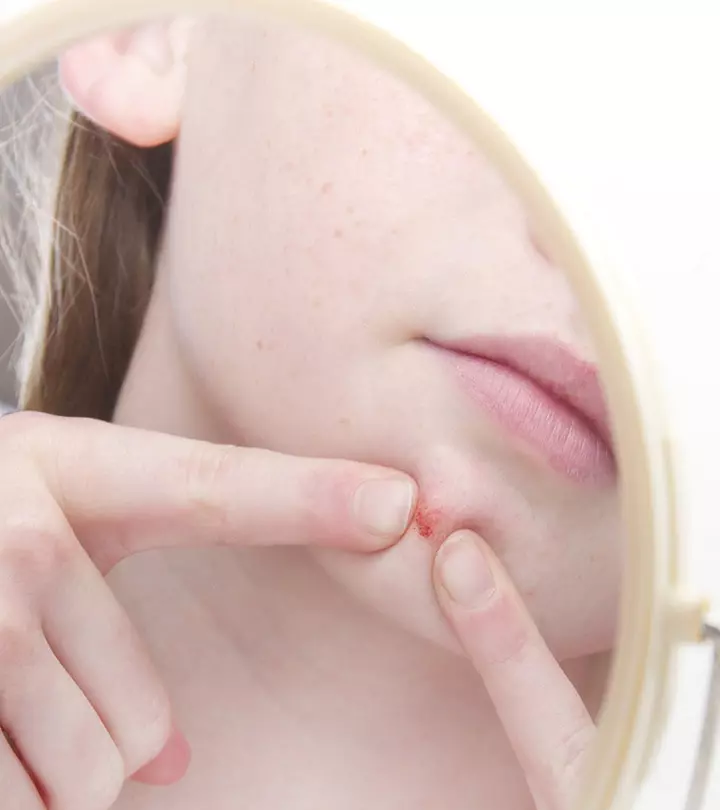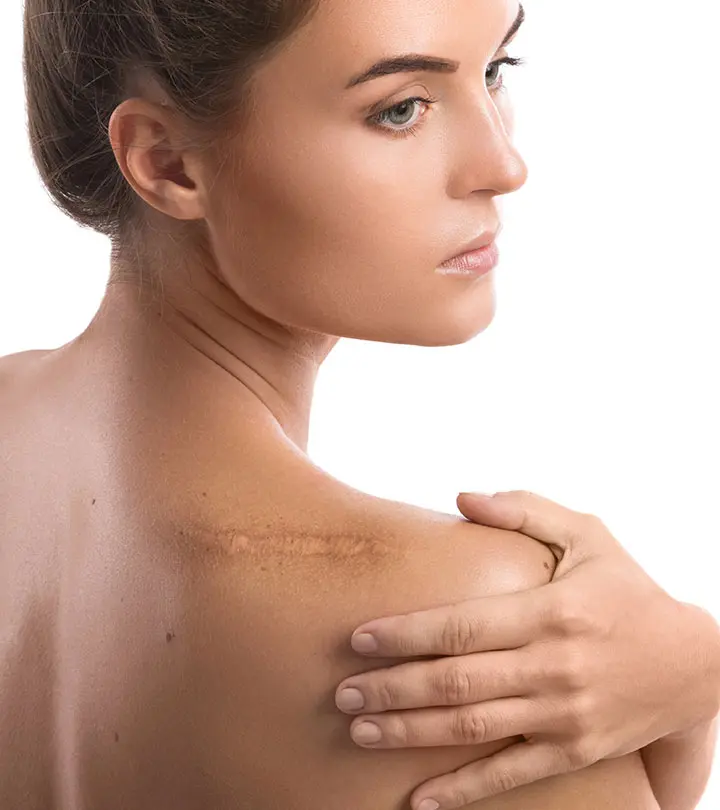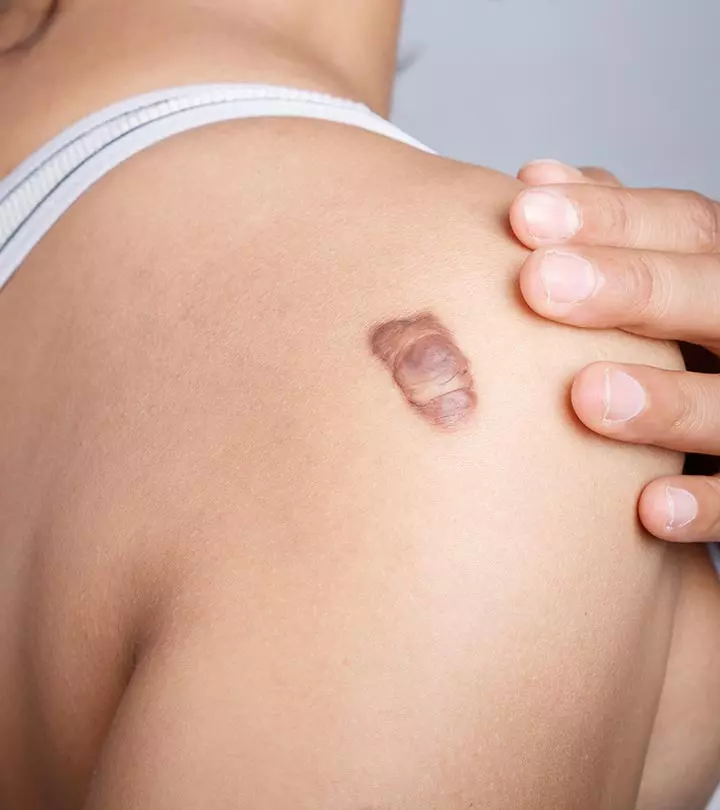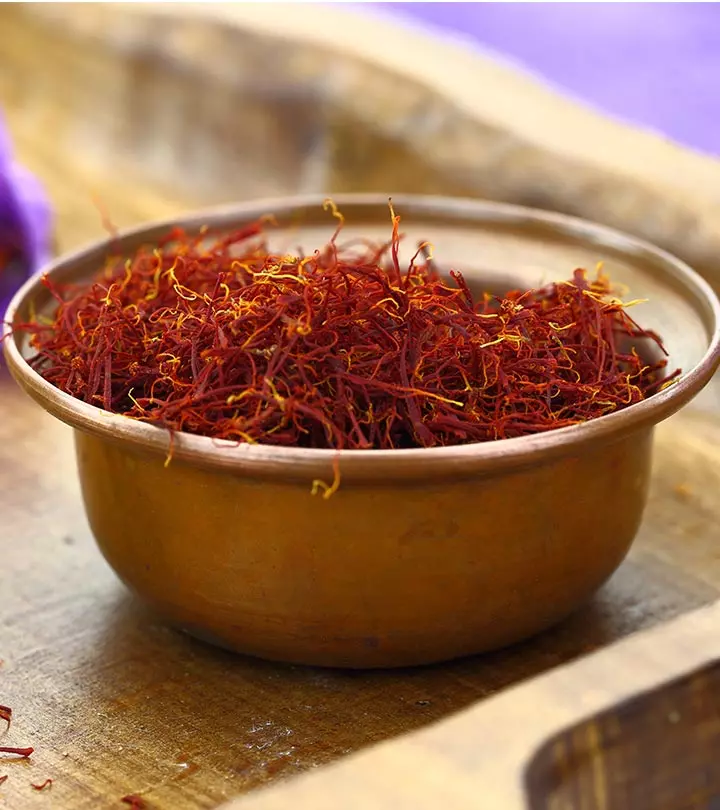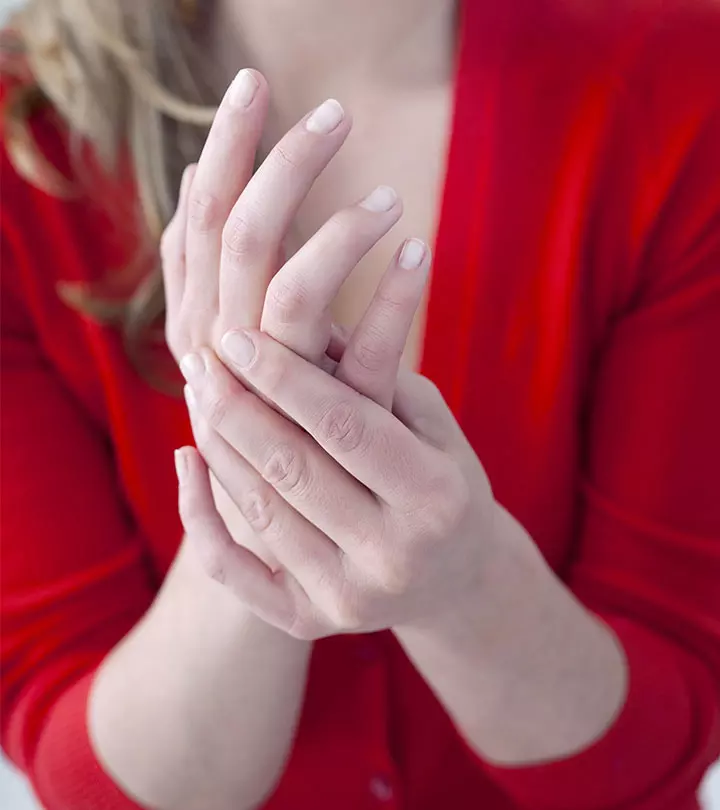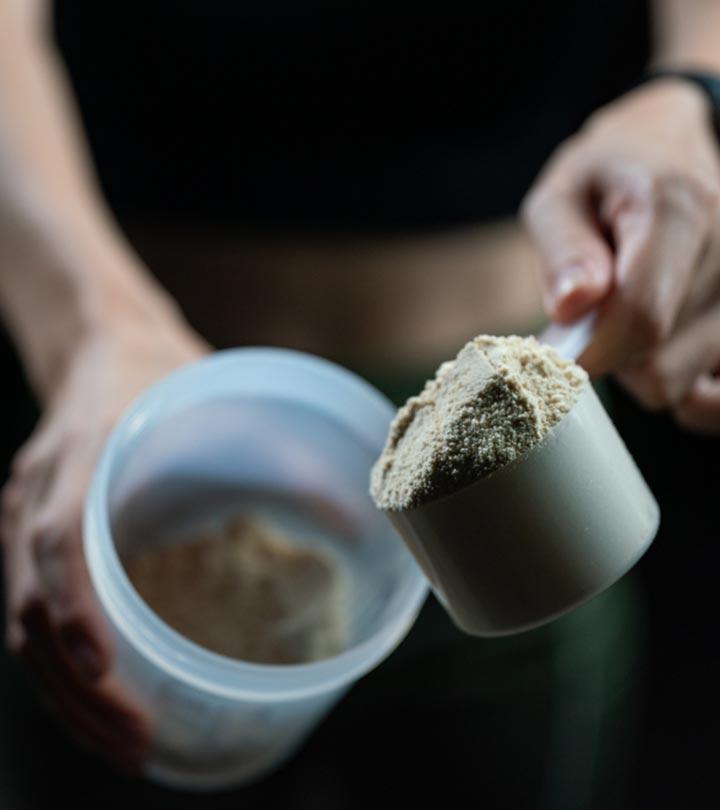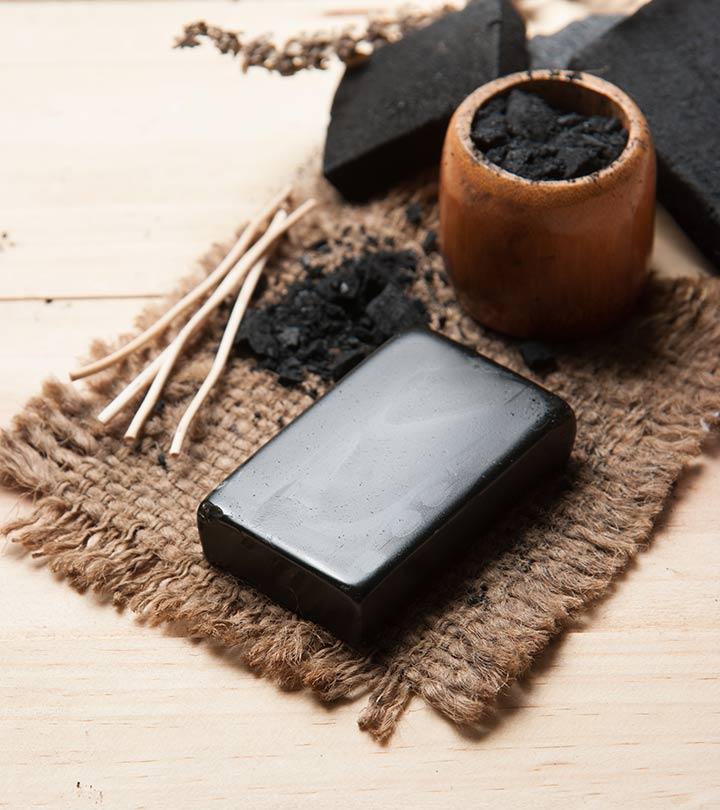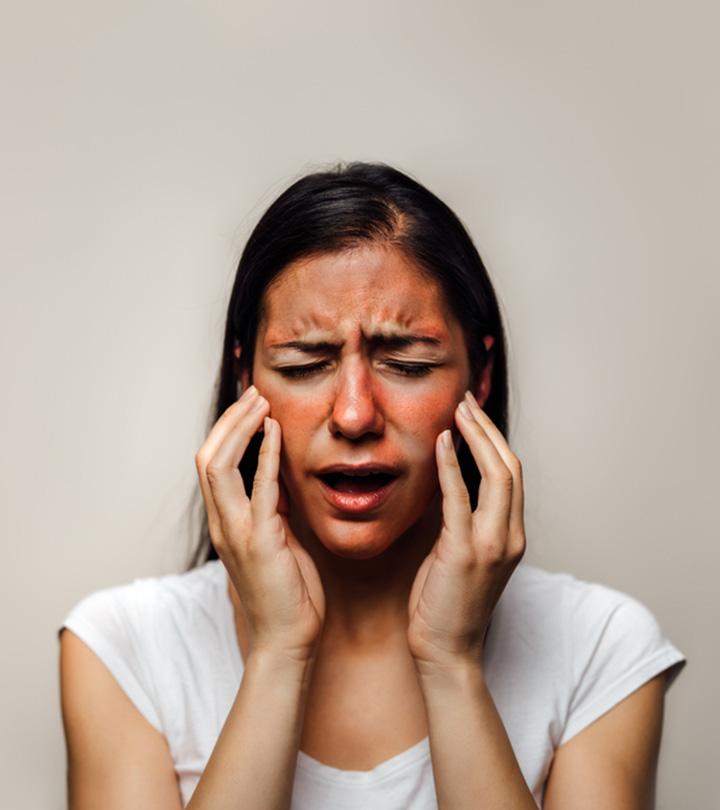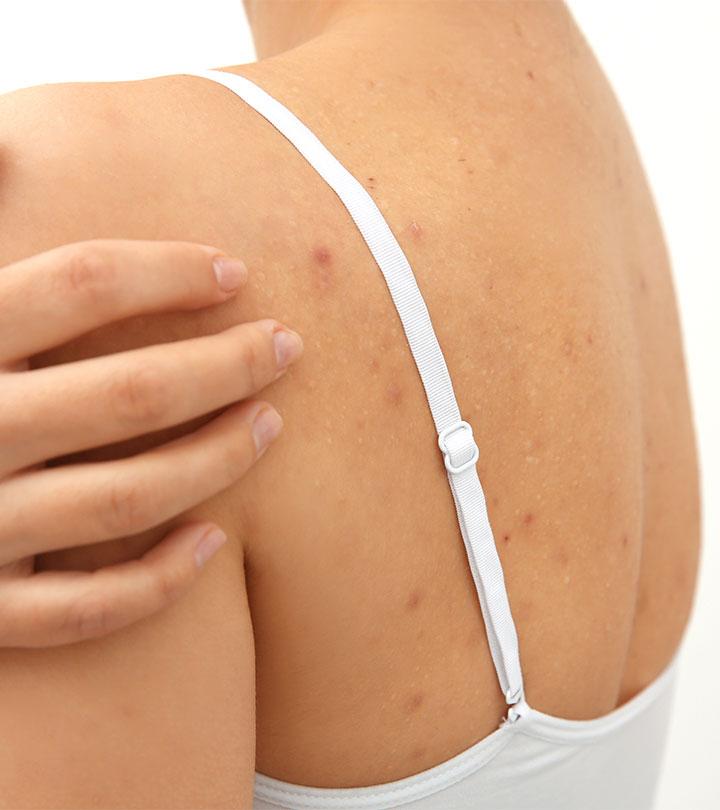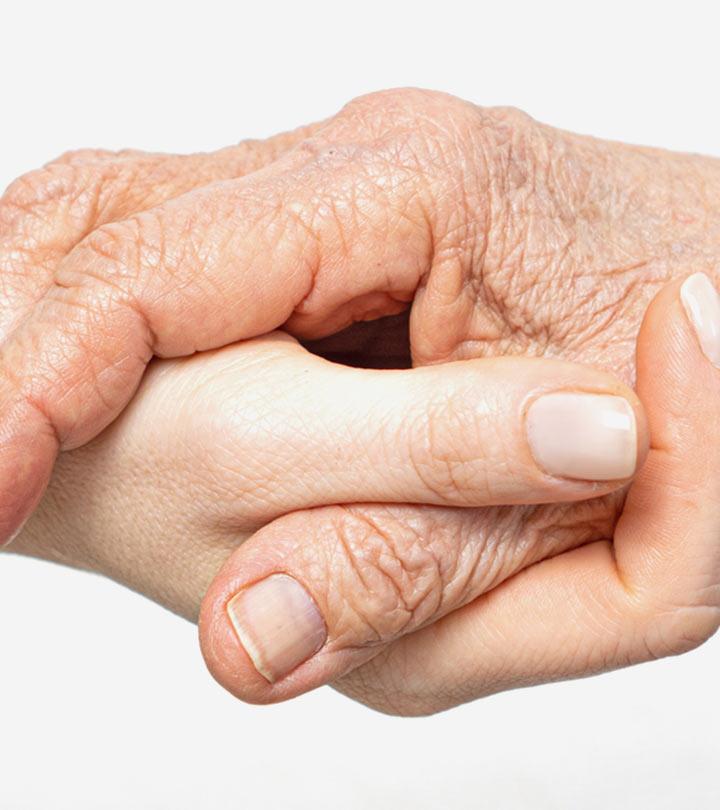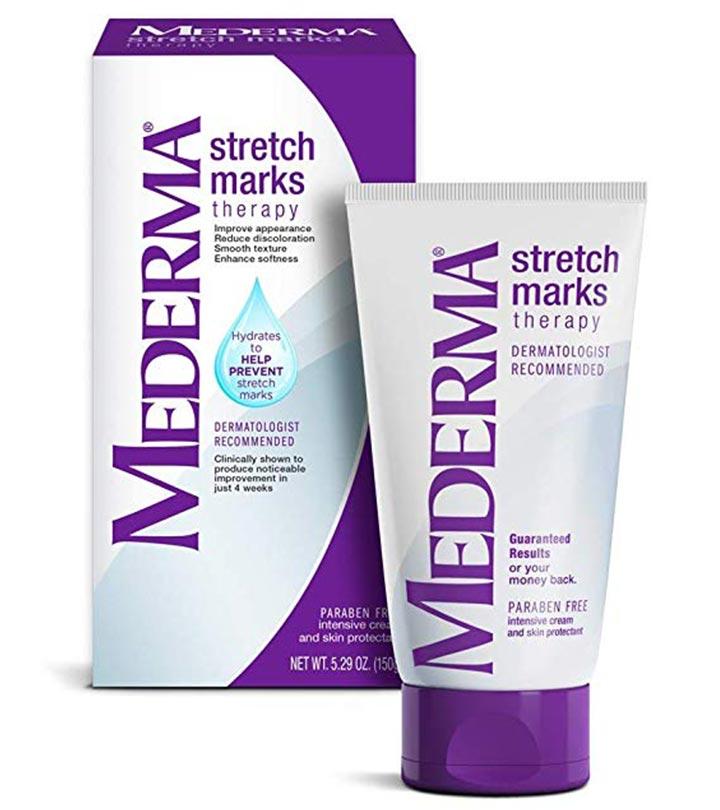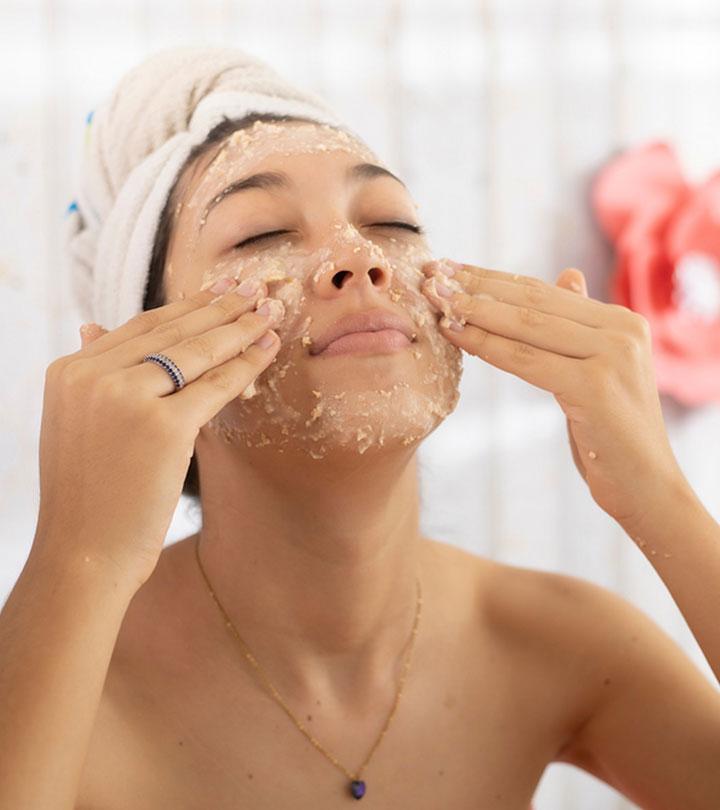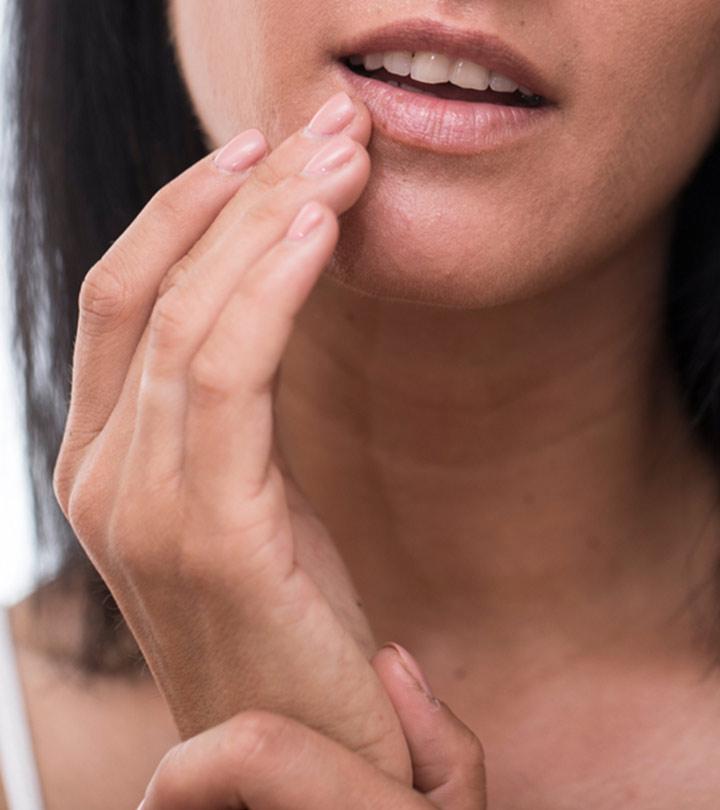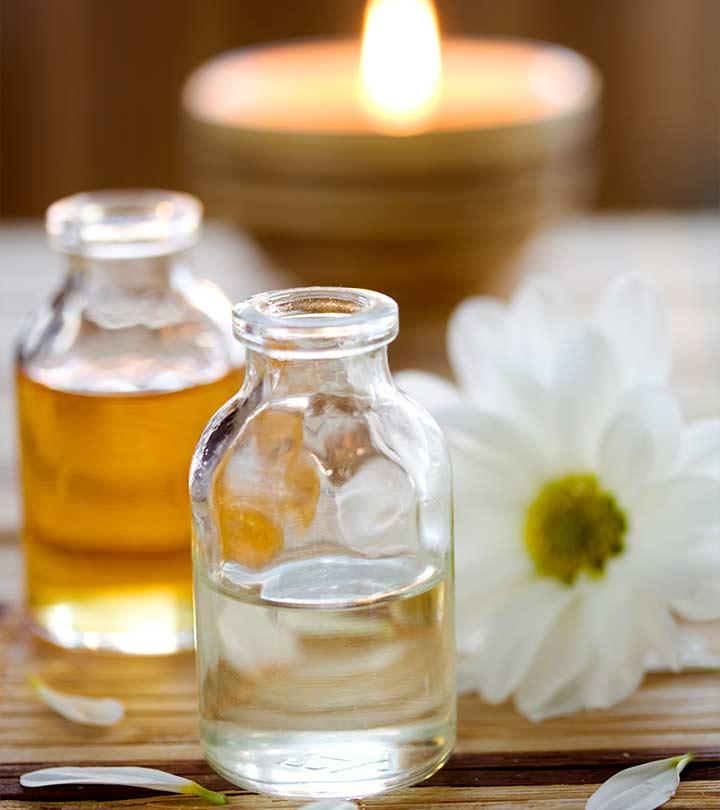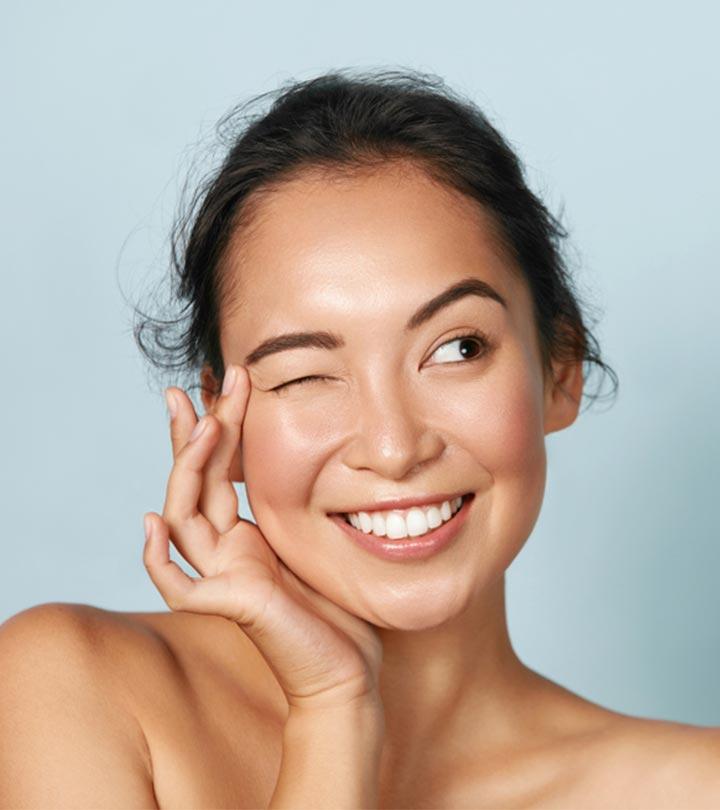12 Best Tips To Stop Skin Picking And How To Heal Its Wounds
Speed up the healing process by cleansing the wound and using natural or medical treatments.
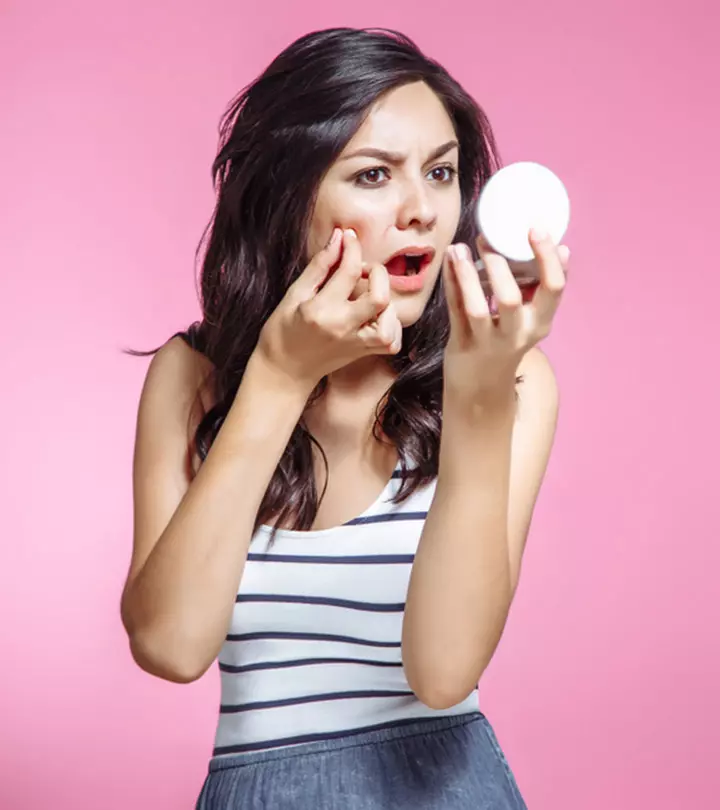
Image: Shutterstock
Almost all of us are guilty of picking skin at some point. We feel that picking the bumps, pimples, and acne may smoothen the skin. However, we fail to realize that skin picking can worsen the conditions. If you are struggling with dermatillomania or skin picking disorder and don’t know how to stop it, we can guide you.
This article explains 12 effective tricks to stop this compulsive behavior and let your skin heal. You may try some coping strategies and tips to improve your skin. Scroll down.
In This Article
Why Do We Pick Our Skin?
Here are the reasons we pick our skin:
- Skin Conditions: Acne, psoriasis, eczema, or fungal infections could trigger skin itching and picking.
- Skin Dehydration: Dry skin also triggers skin picking. Even your lips, cuticles, elbows, and the soles of your feet could go dry.
- Wound Scabs: When a wound starts healing, a thick layer of skin is formed. This scab can sometimes be itchy and dry and trigger scab-picking.
- Stress: Sometimes, anxiety and stress also cause the urge to pick skin. Biting the cuticles and constantly poking a bump on the face or body could get more frequent when a person is under stress.
Sometimes, skin picking can become a habit without an external trigger. Chronic skin-picking is also known as excoriation disorder and is a mental health issue. It can cause skin lesions and impact the quality of life.
A study was conducted on 10,169 US adults, aged 18-69 years, to understand the prevalence of skin-picking disorder. It was found that 213 (2.1%) participants reported having a current skin-picking disorder, while 318 (3.1%) reported a lifetime history of it. Further, people with the disorder also reported mental health comorbidities like generalized anxiety disorder (63.4%), panic disorder (27.7%), and depression (53.1%).
A study published in Comprehensive Psychiatry attempted to understand the onset of chronic skin picking. 262 subjects participated in it, of which 87% were female. The study found that skin picking was at its highest between 11 and 15 years of age, and it eventually reduced, with a small spike experienced by subjects over the age of 40. The study concluded that skin-picking disorder is closely connected with other psychiatric conditions, such as ADHD, OCD, and anxiety.
Age At The Onset Of Skin Picking
Source: Characteristics of 262 adults with skin picking disorderWhatever the cause, one can reduce skin picking to a great extent. Here are the 12 effective ways to achieve the same.
12 Effective Ways To Stop Picking Skin
1. Consult A Dermatologist
Whether it is a skin rash, an infection, or extremely dry skin, if you are picking your skin or scratching it constantly, you must first visit a licensed dermatologist. Your dermatologist will be able to prescribe the right treatment for the skin infection or allergy. Taking the right treatment at the right time will save you money and keep you from hurting your skin further.
2. Talk To A Counselor
When it comes to mental health, seek professional guidance. A counselor can give you expert advice to help you tackle the urge to pick your skin. Whether it is stress, depression, anxiety, low self-esteem, or self-loathing thoughts, talk to a professional to get the best cognitive behavioral therapy, mindfulness meditation, or habit-reversal training, and practice the various prescribed exercises. You will not only stop picking your skin but also will have more energy, sleep well, and feel good.
 Quick Tip
Quick Tip3. Stay Hydrated
Dehydration can cause the skin to become dry and trigger skin picking. Drink at least 8 ounces of fluids in the form of water, juice, fruits, soup, smoothies, etc. Hydration will make your skin softer and smoother, which will reduce your need to scratch or pick your skin around the nails, elbows, lips, arms, toes, and legs.
4. Exfoliate Your Skin
The upper dead skin layer should be removed at regular intervals to reduce skin picking. Exfoliating using a scrub or a chemical peel can help remove the dead cell layers and dirt and clear out the clogged pores. Exfoliation will also prevent acne bumps, whiteheads, blackheads, and the peeling dead skin layers. You can use lemon and sugar to scrub your feet and elbows, a mandelic acid chemical peel for the face, or a homemade scrub made of rice flour, yogurt, and honey.
5. Use Face And Body Masks
A good way to keep your skin healthy and keep yourself from picking your skin is to apply face and body masks at least thrice a week. A nourishing and hydrating mask along with antibacterial oils like tea tree oil or neem oil will keep the skin smooth and remove bumps. You can use an avocado face mask or mix curd, gram flour, and olive oil and apply it to your body. Wash after 20 minutes.
6. Moisturize Your Skin
Another great way to stop picking dry skin or cuticles is to keep them moisturized. You may have oily face skin but dry skin near your nails and elbows. In that case, use a water-based moisturizer for the face and an oil-based moisturizer or body lotion for the rest of the body. If you have acne, consult your doctor to know the best moisturizer for your skin.
7. Get Regular Mani-Pedi
Not getting regular mani-pedi can also cause the cuticles to become dry and hard. As a result, you may feel the urge to pick your cuticles, which will create uneven skin texture triggering you further to poke your skin. If you do not want to go to a salon, you can try this foot soak (it works!) or just soak your hands and feet in warm water, along with two pumps of shampoo and 2 tablespoons of olive oil. Soak your hands and feet for 30 minutes at least once a week. Apply a moisturizer afterward. Cut your nails to avoid picking skin.
8. Use Hydrocolloid Patches
Hydrocolloid patches are pimple patches that you can apply to the bumps on your face or body. These patches not only treat pimples but also create a barrier over them to prevent you from touching and picking them. Here’s a list of pimple patches you can check.
9. Avoid Oily And Junk Food
Oily and junk food cause inflammation in the body by disrupting the omega-3:omega-6 fatty acid balance. This imbalance causes acne and clogs pores. The bumpy skin can make you squeeze the pimple or poke it, resulting in scarring and hyperpigmentation. Hence, avoid consuming fries, fried chicken, potato chips, burgers, sugary foods, aerated drinks, packaged foods, processed meat, etc.
10. Eat Healthy Food
Consume veggies, fruits, animal or plant sources of protein, and healthy fats. Changing your diet can also affect your skin in a good way. Fruits and veggies are rich in antioxidants and have antimicrobial properties, which help fight skin diseases and treat dry skin and acne.
11. Meditate Every Day
Stress, anxiety, and depression may also cause one to pick their skin. Meditation helps a lot if you have any or all of them. Start by meditating for a minute every day. Increase the time gradually to 20 to 30 minutes every day. You will see great results and will stop picking your skin.
 Quick Tip
Quick Tip12. Learn A New Skill
Learning a new skill is a great way to keep your mind off those things that are worrying you. Channel your energy to a more creative and productive path. Try pottery, painting, creative writing, learning a musical instrument, etc.
Emma Pickins, a blogger, shares her struggle with skin-picking and her search for resources to overcome the habit. She shared insights from the book You Are Not Your Brain which provides a four-step approach to dealing with it. She writes, “To kickstart the process, every time I’ve had the urge to pick or notice my fingers scanning my face, I say: ‘This is just a brain message and it’s NOT worth my attention. I will not feed the monster!’. This is a mantra I came up with through an exercise in the book, and I encourage you to make one up for yourself. It’s been great for coping when the urge arises (i).”
These are the 12 effective ways you can stop or reduce picking skin. But if you have skin-picking wounds, you must heal them as well. How? Here are a few ways you can fade the scars from skin.
How To Heal Skin Picking Wounds
- Protect the wounds: Use a bandage to protect the wounds and prevent bleeding.
- Keep the wounds clean: Dress the wounds regularly to keep them clean and prevent bacterial infection.
- Apply topical ointments: Betadine is a topical ointment that helps prevent infections . For acne and pimples, get a doctor-prescribed ointment and apply it regularly.
- Apply topical natural remedies: Some people swear by using a mixture of sandalwood and rose water for drying out and treating skin wounds. However, it is important to note that there is no scientific evidence that this natural remedy works.
Infographic: Everything You Need To Know About Skin Picking
Picking your skin may seem like an innocuous habit, which may turn serious if ignored. It is a type of obsessive-compulsive disorder, similar to trichotillomania (hair-pulling disorder).
Check the infographic below to learn more about skin picking, why most people pick their skin, its prevalence in the general population, and how it impacts an individual’s mental and physical health. Keep scrolling! Illustration: StyleCraze Design Team
Dehydration, skin infections, stress, and wound scabs can increase the urge to pick at your skin and leave skin lesions. To stop you from doing so, you can follow simple steps such as keeping yourself hydrated and exfoliating your skin to remove dirt and grime and keep your skin moisturized. Eating a healthy and balanced diet, meditating, and moisturizing daily ensures your skin is healthy and decreases the urge to pick your skin. You can consult a dermatologist to get the right medications and keep your wounds clean to speed up the healing process. We hope this article helped you on how to stop skin pricking and keep your skin glowing and healthy.
Frequently Asked Questions
Is skin picking a part of anxiety?
No. Skin picking is not part of anxiety. However, anxiety may trigger a person to pick at their skin.
Is skin picking related to ADHD?
Yes. Studies indicate that people with Attention Deficit Hyperactivity Disorder (ADHD) may develop skin picking as a coexisting issue (1).
Is skin picking a form of OCD?
No. Skin picking is considered an impulse control disease while OCD (obsessive compulsive disorder) is considered an anxiety disorder.
Key Takeaways
- Skin infections, skin dehydration, wound scabs, and stress can trigger skin picking.
- Consult a dermatologist or talk to a counselor to get rid of skin picking.
- Stay hydrated, exfoliate your skin, use face and body masks, and moisturize your skin to avoid picking your skin.
Check out this video on overcoming the habit of skin-picking. Find valuable tips and tricks that can empower you to break the cycle and regain control over your skin.
Personal Experience: Source
StyleCraze's articles are interwoven with authentic personal narratives that provide depth and resonance to our content. Below are the sources of the personal accounts referenced in this article.
i. Step 1 to not picking my skin: learning that i am not my brainhttps://medium.com/@emmapickins/stop-picking-your-skin-step-1-314434d3aeed
References
Articles on StyleCraze are backed by verified information from peer-reviewed and academic research papers, reputed organizations, research institutions, and medical associations to ensure accuracy and relevance. Read our editorial policy to learn more.
- Prevalence of skin picking (excoriation) disorder
https://www.sciencedirect.com/science/article/pii/S0022395620308773
Read full bio of Dr. Sruthi Alla
Read full bio of Eshna Das
Read full bio of Shiboli Chakraborti





